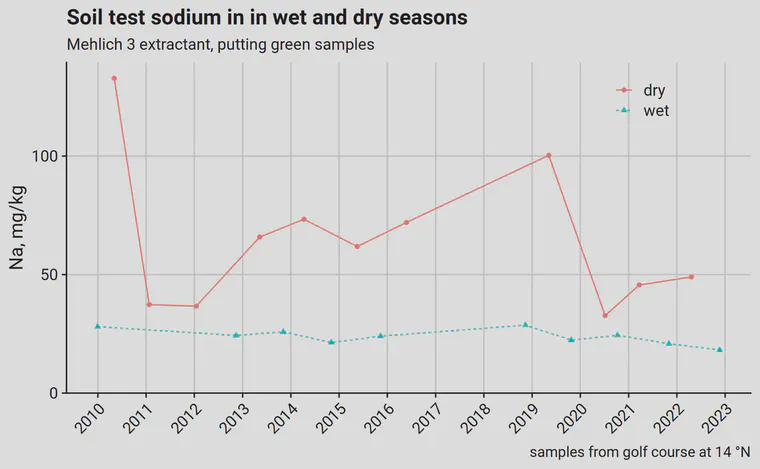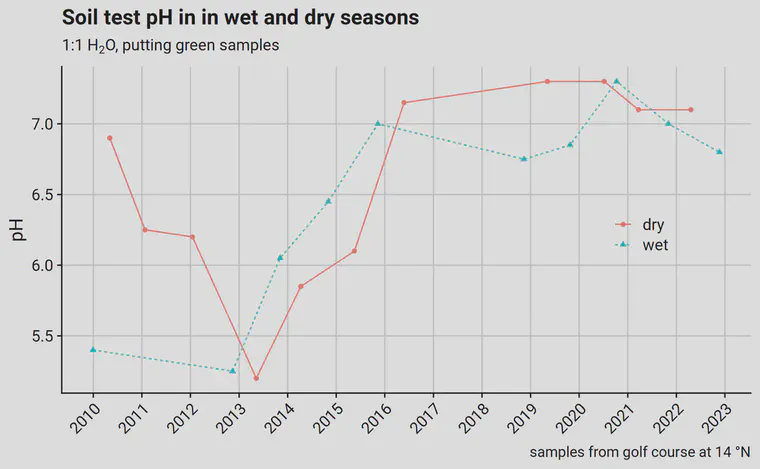Seasonal change in soil pH in a tropical monsoon climate
I’ve written about the rapid change in soil pH that can occur in sand rootzones, especially when turf is grown in a tropical climate. That potential for soil pH and other soil parameters to change substantially is one of the reasons I recommend annual testing of turf grown in sand rootzones.
John Rowland wondered about the seasonal change in pH at this site, noting that there can be high quality turf with soil pH less than 5.
Would this site have increased pH during dry periods? If so, no need to apply lime and play ping pong with pH. 😜🏓 Especially if turf quality is high. This may be another area where habitual reactions may not be the best, as I have seen very high quality turf with pH <5.
I’ve also seen high quality turf with soil pH less than 5, although in a sand rootzone, in a tropical monsoon climate, there’s not much buffering the soil pH against the acidifying effects of nitrogen fertilizer and precipitation. So I generally prefer to manage turf in such a rootzone keeping the soil pH above 5.5.
I didn’t have a long time series from the example property that John was replying about, but I do have wet and dry season test results from a nearby (50 km, 30 miles) golf course that illustrate what I expect may be typical.
First, I checked the soil sodium time series to make sure the samples have a reasonable classification into wet and dry season. The samples were generally taken towards the end of the annual dry season, and then another set of samples were taken about six months later at the end of the annual wet season.

That looks pretty typical. The sodium increases during the dry season, because there is less leaching from rainfall, and because the irrigation water contains some sodium. Then, during the rainy season, the soil sodium levels go down to what is basically a background amount of sodium, and that happens because the sodium leaches during rain events that cause leaching.
For the pH, there’s not such a clear breakdown in wet season vs. dry season. As these greens matured, and slowly added more soil organic matter, there was less fluctuation in soil pH, because there is more buffering capacity.

Sometimes the soil pH was higher during the wet season sampling. Sometimes the soil pH was higher during the dry season sampling. It doesn’t make any sense to play ping pong with soil pH—I’d rather keep that relatively stable. With annual soil tests of sand rootzones, it’s possible to achieve that stability.